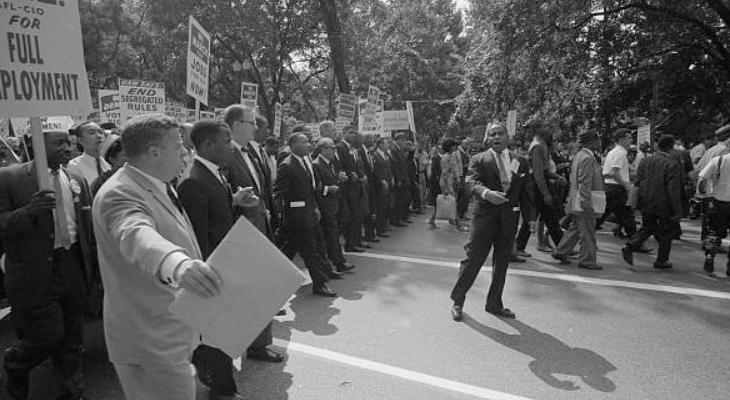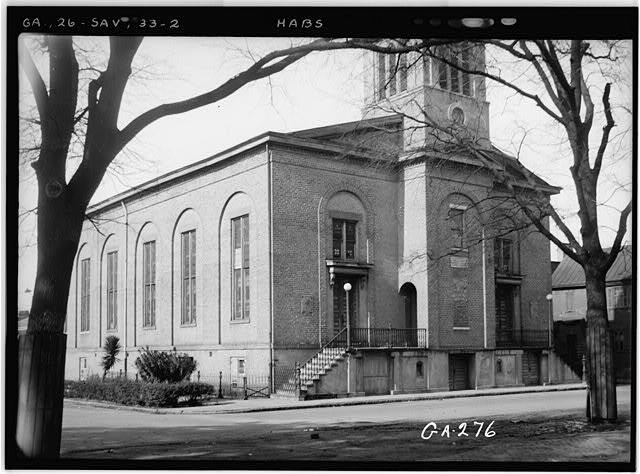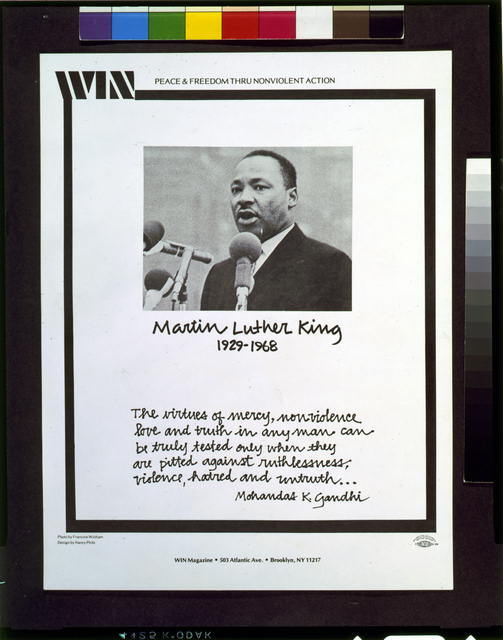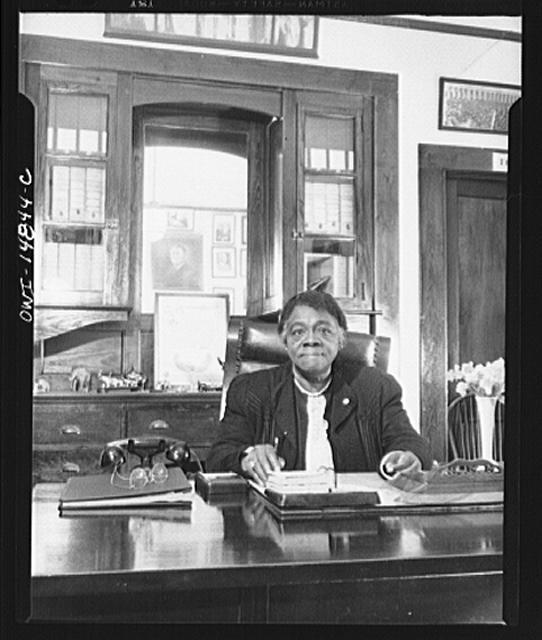Black Interfaith Project Launches to Honor Diversity of Black Religious Life
March 24, 2022

This article was originally posted on February 22, 2022.
The Black Interfaith Project at IFYC is an initiative to spotlight the longstanding diversity of Black religious life and the many ways Black interfaith engagement has contributed to American spiritual and civic life. To celebrate its launch and in honor of Black History Month, the White House and IFYC co-sponsored A Celebration of Black Interfaith and Religious Diversity in America on February 23, 2022.
The Second Gentleman of the United States, Douglas Emhoff, gave keynote remarks, and the event featured a diverse panel who shared the current state of Black interfaith engagement in the United States.
“The interfaith experience of Black life in America has often been overlooked and unacknowledged,” said the Rev. Frederick Davie, senior advisor for Racial Equity, IFYC. “The Black Interfaith Project seeks not only to rectify this unfortunate past but to celebrate the richness of interfaith bridge building within Black communities and thereby enrich the entire interfaith experience of the nation.”
Share
Related Articles
What Is the Black Interfaith Project at IFYC?
The Black Interfaith Project at IFYC centers the diversity of religious, spiritual, and philosophical expressions that have animated the Black experience in America since the time of enslaved Moroccan explorer, Mustafa Azemmouri, in the early 16th Century to the era of President Barack Obama and Vice President Kamala Harris. Additionally, the Black Interfaith Project explores the dialogue between those traditions, the bridgebuilding between the corresponding groups, and the implications for Black communities and America as a nation. The project is supported by a $1 million grant from the Henry Luce Foundation.
Why Does Black Interfaith Matter?
The United States prides itself on being the world’s first religiously diverse democracy. Perhaps no community has negotiated the complexities of religious diversity more impactfully than Black peoples. Still, much of what we think of as “interfaith cooperation” has emerged from principally white spaces, with Black voices systemically underrepresented.
The Black Interfaith Project maintains that some of the most inspiring crossing of religious boundaries and many of the most meaningful moments of interfaith cooperation in American history have come out of the Black experience, from the Underground Railroad to the Harlem Renaissance, the Civil Rights movement to the interfaith coalition that elected President Obama.
What is the Work of the Black Interfaith Project?
Black Interfaith will explore how interfaith efforts – historical and contemporary, personal and political – that emerge out of diverse Black spaces contribute to the formation of the United States as a religiously diverse democracy.
Fellowship Program: The cornerstone of the Black Interfaith Project is the Fellowship program which convenes Black professionals from a wide range of sectors and worldviews who are engaged in interfaith bridgebuilding through their lived experience, scholarship, and civic engagement. Convening regularly over the course of two years, and engaged through training and networking, collaborative and individual projects, and multi-platform discussion and dissemination, the Fellows’ activities will inform a more accurate narrative about and by Black interfaith leaders.
Public Events: Building on the impact and momentum of the Fellows’ work, IFYC is partnering with esteemed collaborators, including the Smithsonian Institution and the American Academy of Religion, to host major public events to launch and advance Black Interfaith. These events, together with the Fellowship projects, will bring the narrative of Black Interfaith to the public square, increasing public knowledge and inspiring widespread action.
Curricula & Training: Building on the impact and momentum of the Fellows’ work, IFYC will develop curricula and toolkits to equip educators and cultural institutions to engage audiences in deeper understanding of Black communities’ contributions to interfaith cooperation and the formation of our diverse democracy.
Public Narrative: IFYC will solicit research and publications that illustrate the influence Black Interfaith has made and continues to make in American history. We will tell a story that welcomes intersectional identities and creates the opportunity to discuss the transformation of America into the promise of what it can be but has not yet been.
Who Makes Up the Leadership of the Black Interfaith Project?
Interfaith Youth Core (IFYC): IFYC, the nation’s premiere interfaith institution, is a civic institution working towards an America where people of different faiths, worldviews, and traditions can bridge differences and find common values to build a shared life together.
Rev. Frederick Davie, Senior Advisor for Racial Equity, Interfaith Youth Core: Reverend Fred Davie joined IFYC as Senior Advisor for Racial Equity in June 2021. In this role, Fred collaborates with the executive team and other staff to ensure racial equity informs programming, operations, and culture. Specifically, Fred leads the Black Interfaith Initiative, supervises IFYC’s Racial Equity Working Group, and oversees the southern Black Interfaith and HIV-AIDS collaboration with Wake Forest University School of Divinity and the Gilead Foundation.
Rev. Alexis Vaughan, Program Manager, Interfaith Youth Core: Reverend Vaughan manages the Black Interfaith Project and supports IFYC’s Alumni Leadership work and Racial Equity initiatives. She holds a BA in Biological Anthropology from Duke University and a Master of Divinity from the University of Chicago Divinity School. As an ordained minister, Alexis has spent the last several years pastoring congregations in the Washington, DC area where she organized community engagement and social justice ministries alongside clergy of various faiths in the spirit of mutual respect and loyalty.
Black Interfaith Steering Committee: Black Interfaith is led by a Steering Committee of prominent scholars and institutional leaders with expertise in the intersection of interfaith cooperation and the Black experience.
What Are Some Examples of Black Interfaith?
Mustafa Azemmouri Taken on Spanish Expedition: As a young man, Azemmouri, also known as Estebanico, was sold into slavery in 1522 in the Portuguese-controlled Moroccan town of Azemmour, on the Atlantic coast. He was sold to a Spanish nobleman, Andrés Dorantes de Carranza. Azemmouri may have been raised as a Muslim, but because Spain did not allow non-Catholics, particularly Muslims and Jews, to travel to the New World, most historians believe that he was required to convert to Roman Catholicism to join the expedition. His Christian name, Esteban (meaning Stephen), suggests that he may have been baptized. Referred to as “the black,” by survivors of the expedition, Azemmouri was the most able to communicate with indigenous peoples and was crucial to forging working relationships between tribes and Spanish explorers that led to European settlement in what would become New Mexico and Arizona.

First African Baptist Church in Savannah, Georgia, in 1936. Photo: L.D. Andrew/Library of Congress.
Founding of First African Baptist Church in 1773: This historic church served as the largest gathering place for Blacks and whites to meet during the time of segregation. The building is a living legacy of Black Interfaith in what would become the United States of America. The holes in the floor are in the shape of an African prayer symbol known to some as a BaKongo Cosmogram. These holes enabled escaping slaves to be guarded under the church’s floors on their path to freedom. Many of the pews have West African Arabic script engraved on them, a recognition that many of the enslaved people that built and passed through the church were Muslim.

A tribute to King and Gandhi in WIN Magazine of Brooklyn. Photo: Francine Winham/Nancy Philo/Library of Congress
The Muslim Roots of African American Music: Ethnomusicologists agree that the roots of African American music are to be found in Islamic West Africa. The blues is an African American creation, born of American circumstances and various influences. What makes it unique is the prevalence of several Sahelian/Islamic stylistic elements that became dominant due in part to historical events particular to American slavery.

Mary McLeod Bethune at Bethune-Cookman College, Daytona Beach, Florida, January 1943. Photo: Gordon Parks/Library of Congress.
Nonviolent Civil Disobedience in the Civil Rights Movement: The Rev. Dr. Martin Luther King, Jr cited the Hindu leader Mahatma Gandhi and his formational experiences in India as ‘furnishing the method’ of the Montgomery Bus Boycott and work of the American Civil Rights Movement of the 1950s and 60s.
Advances in U.S. Public Education: Mary McLeod Bethune, the daughter of enslaved parents, became one of the most important American educators and activists in the 20th century. As the founder of a training school that served Black women and later became Bethune-Cookman College, Bethune was influenced by her Christian background and the teachings of Gandhi to advocate for a civil rights agenda inclusive of a broad range of religious and worldview traditions: “Any idea that keeps anybody out is too small for this age—open your heart and let everybody in,” she advised her students.
Read more stories about Black interfaith experiences in Interfaith America, including 12 Black Interfaith Leaders That Shaped America; The Movement of Joy: Archiving Black Joy and Spirituality Through Dance; My Son and Muhammad Ali: Life Lessons from the Greatest; A Year After George Floyd’s Murder: How Black Interfaith Can Give Hope to America; and pretty,dangerous,words. being honest about bell hooks’ passing.
Watch or listen to our conversation about one influential interfaith leader, Pauli Murray, the first Black female Episcopal priest in United States.



